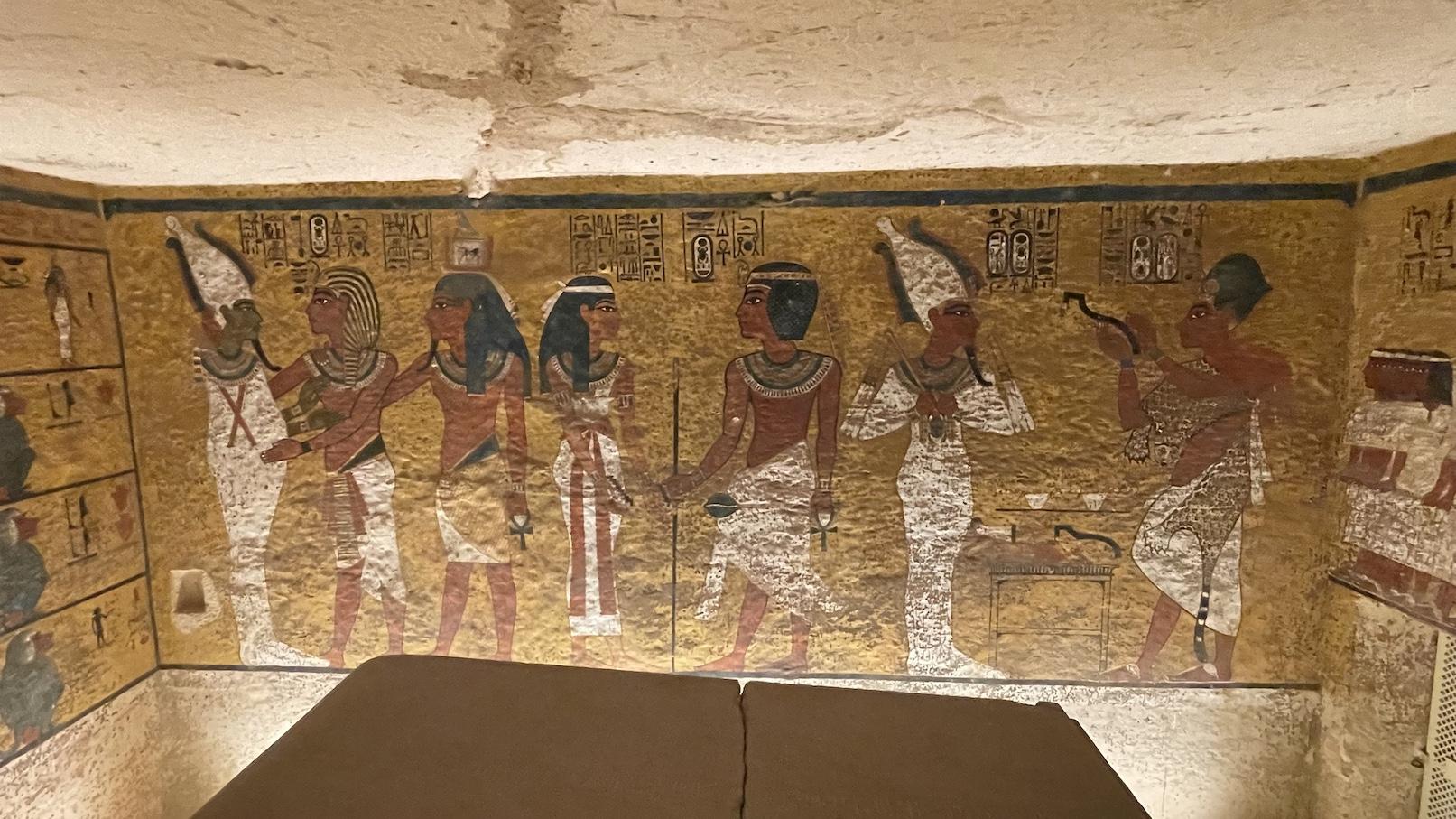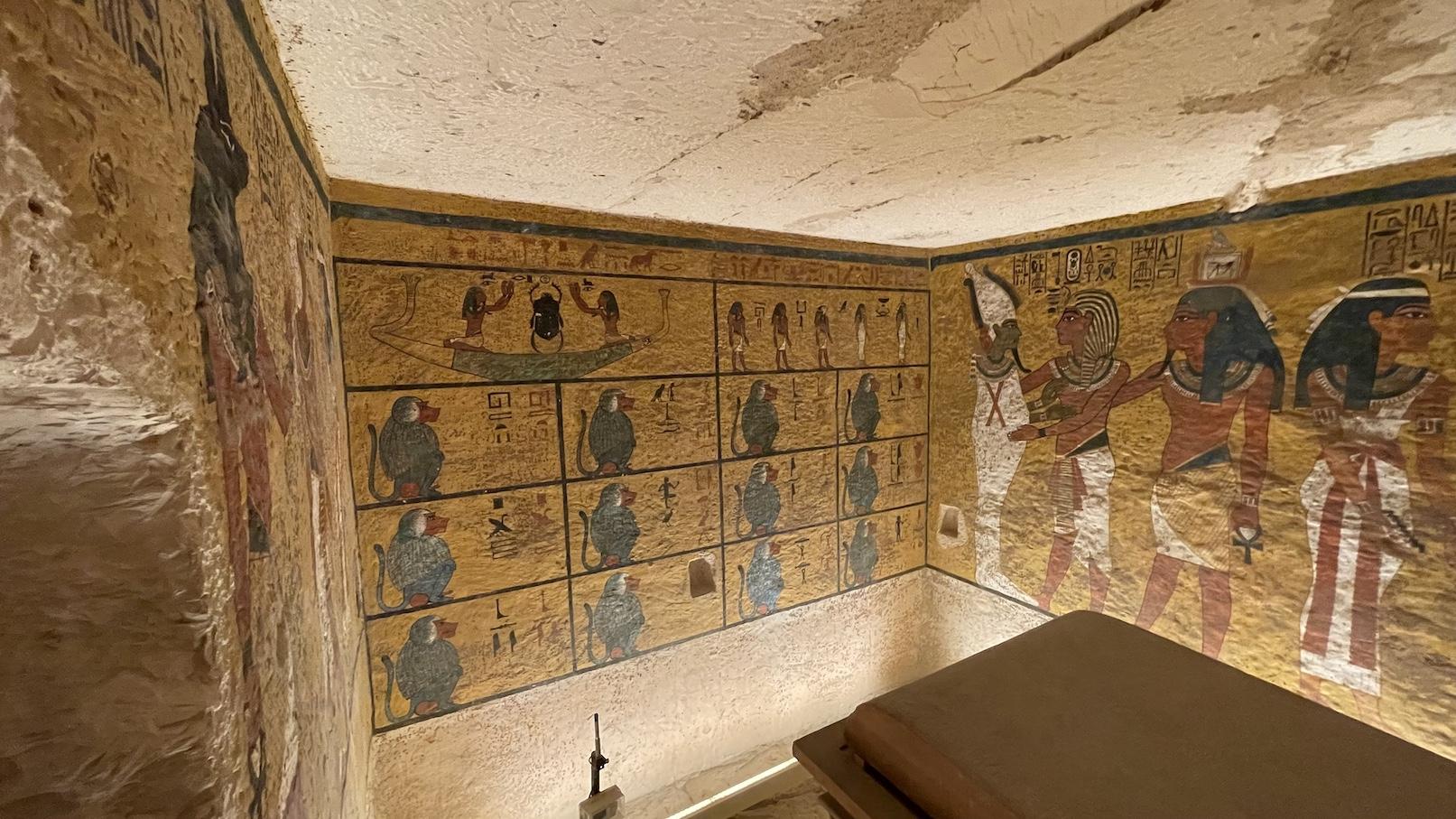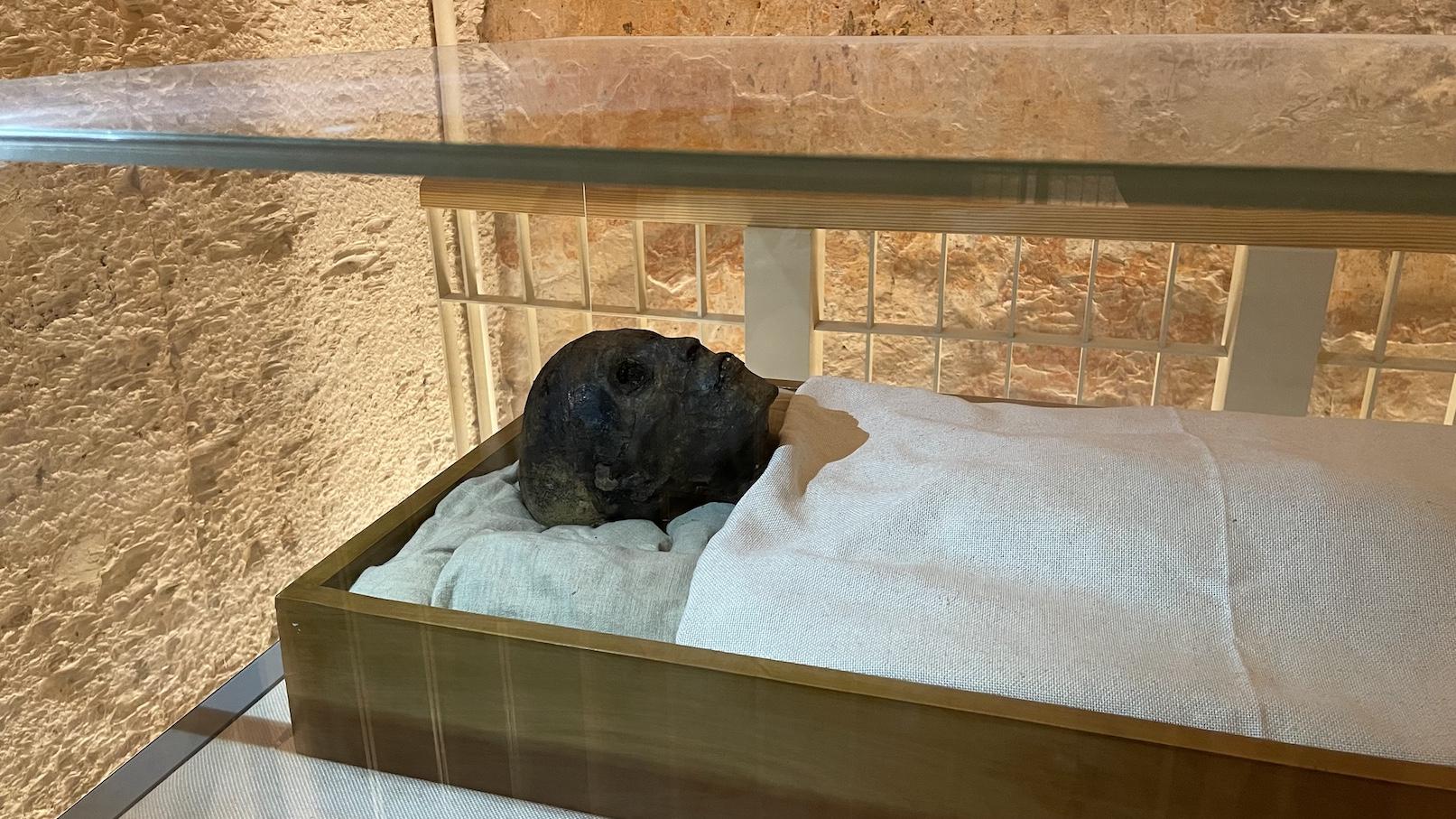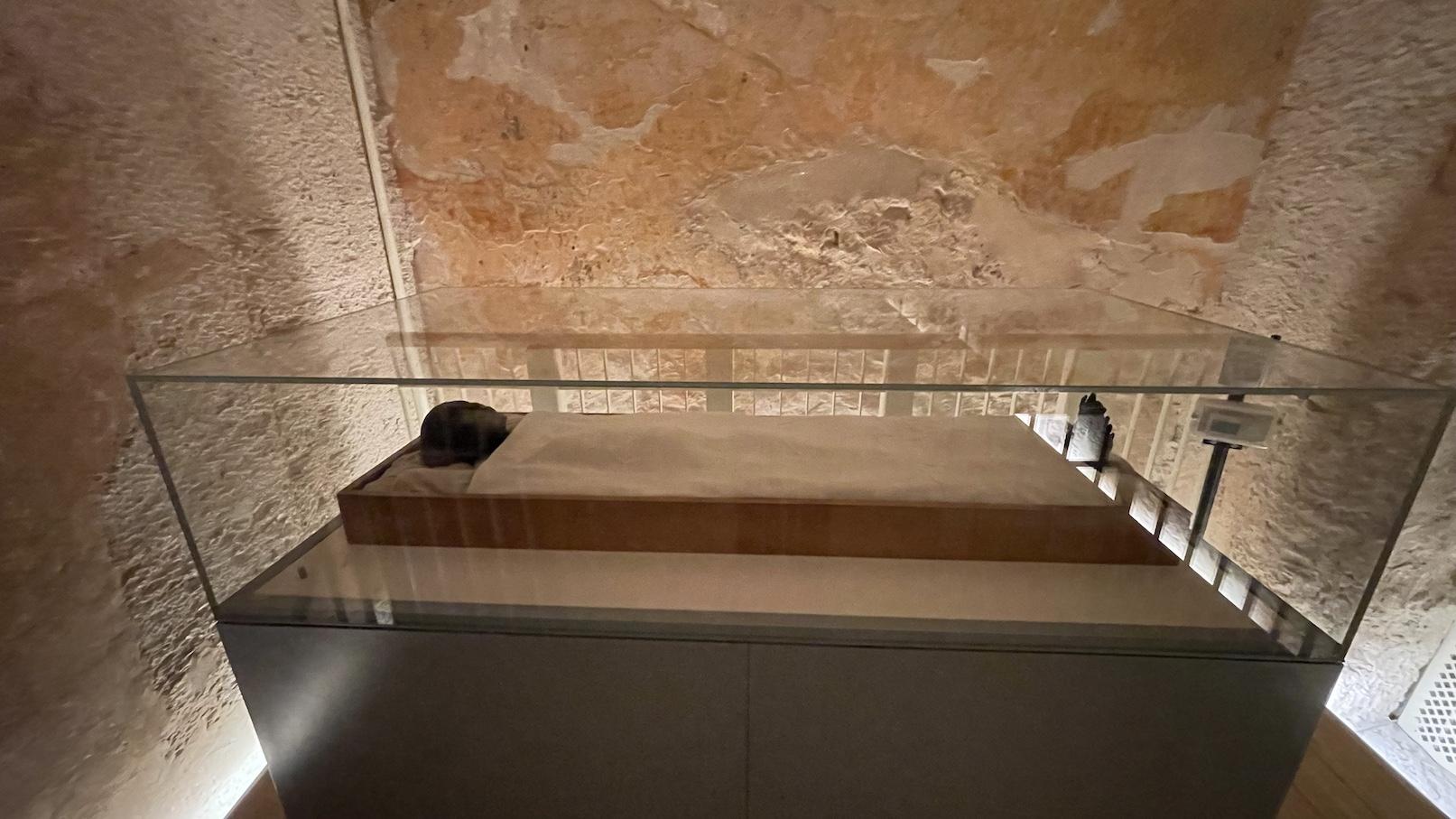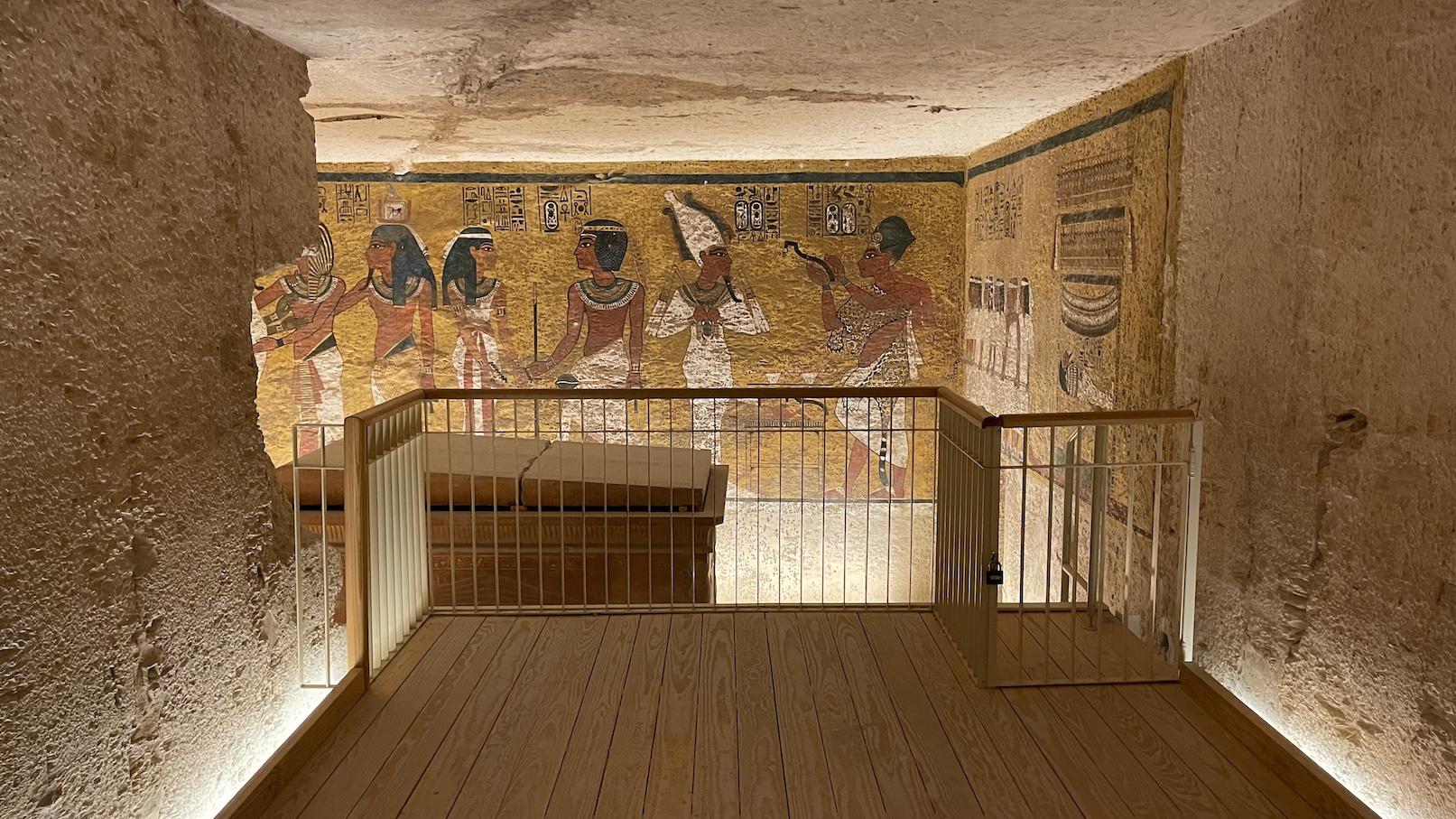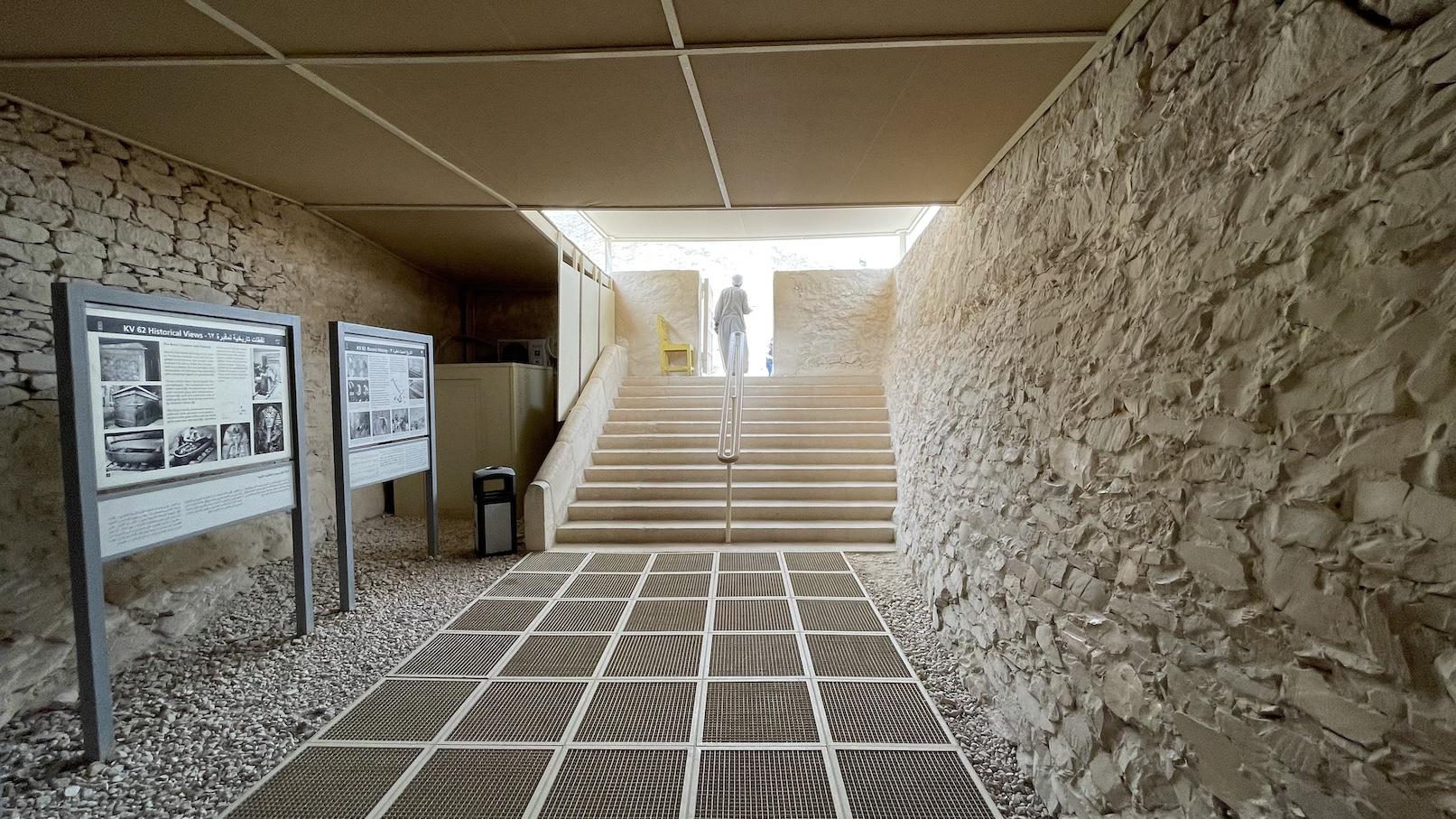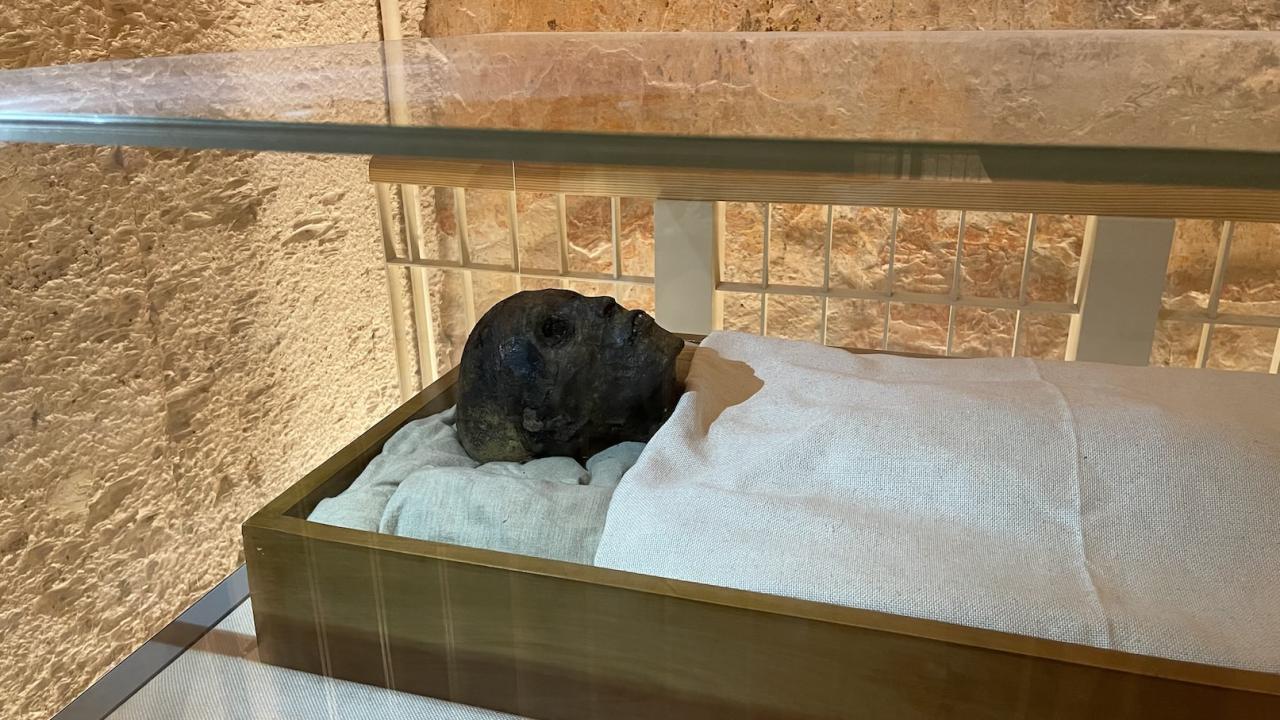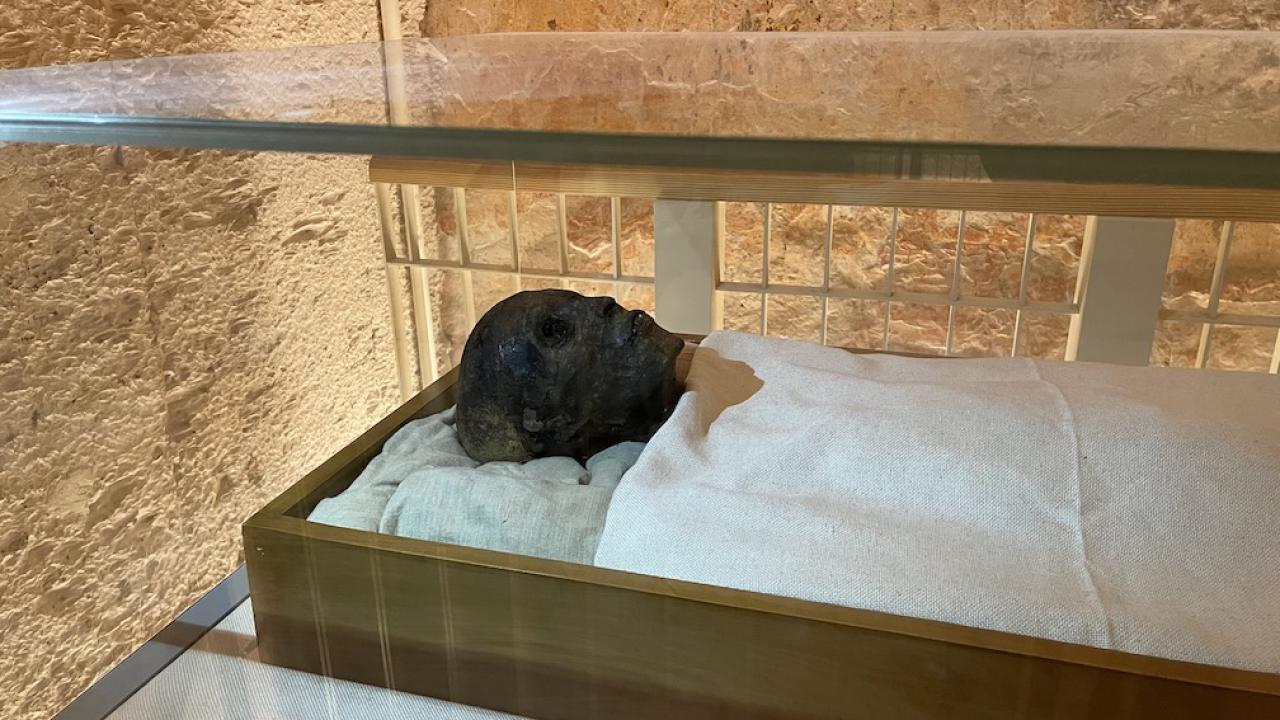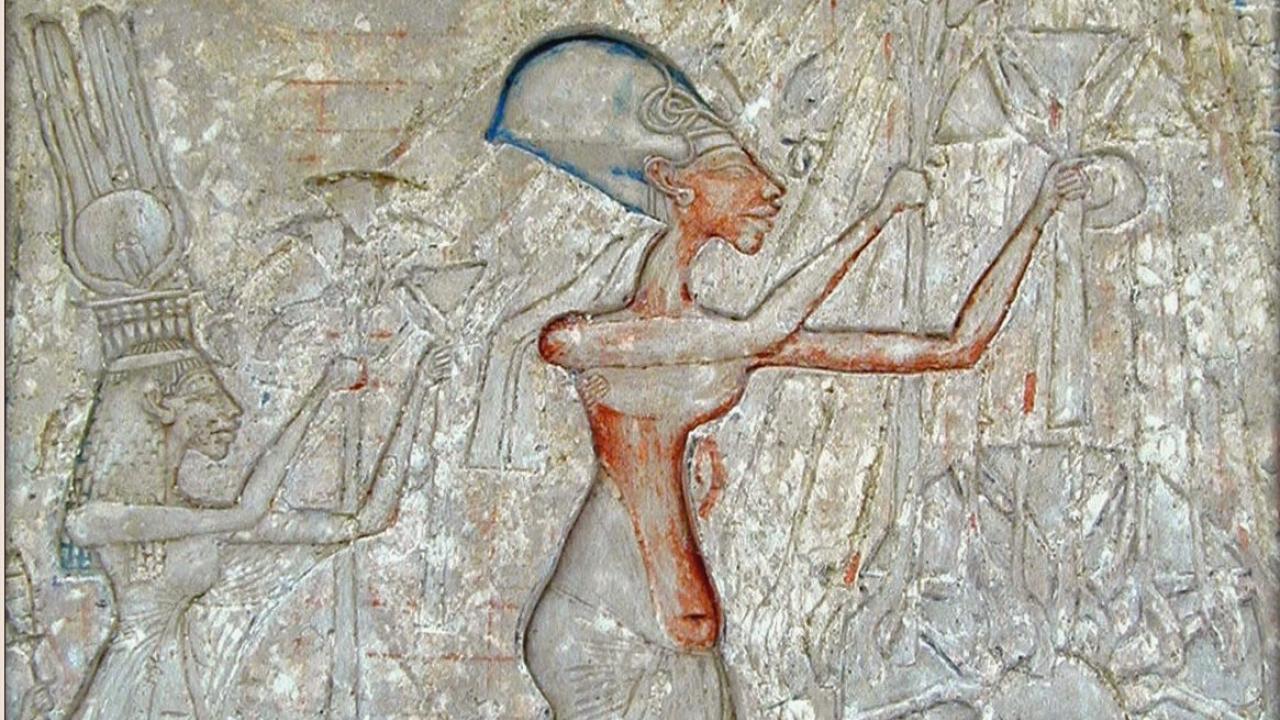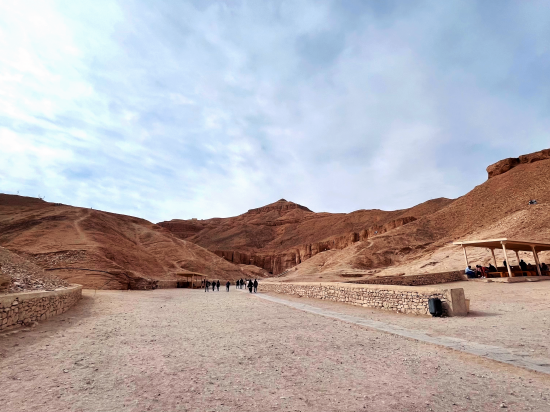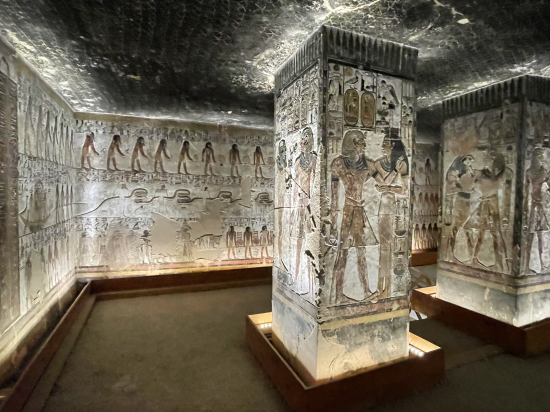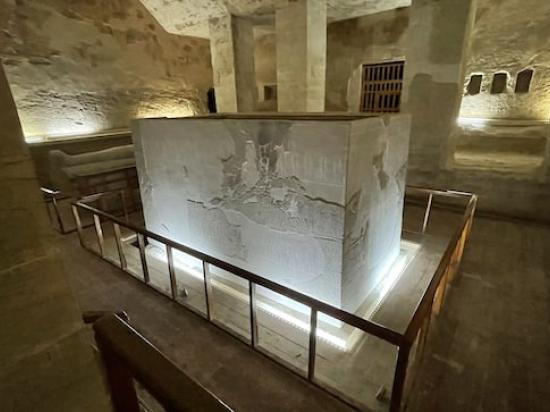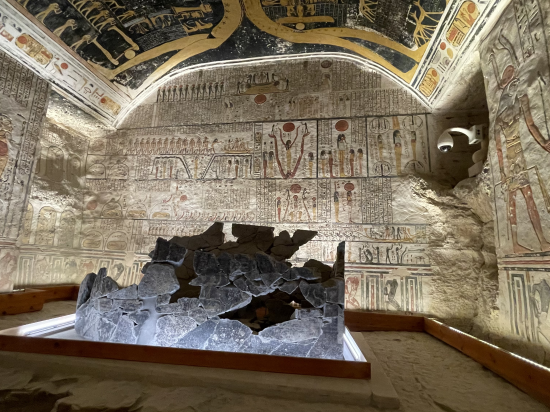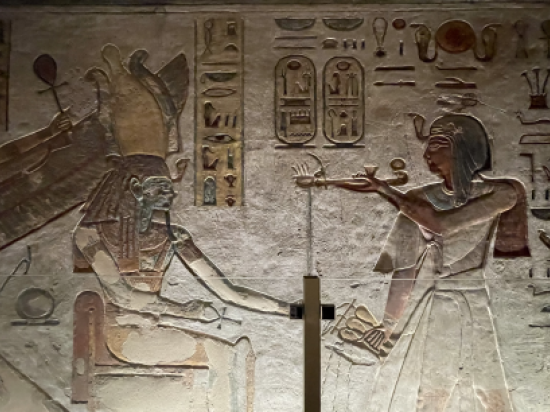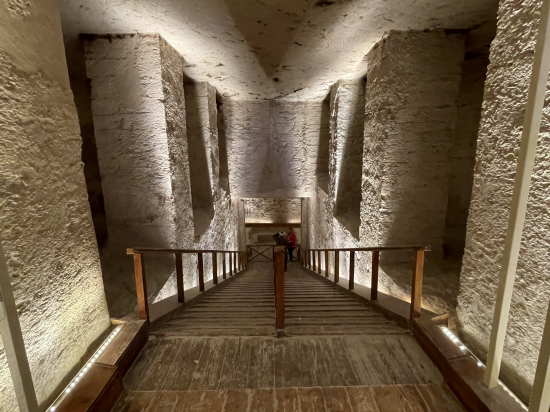The Tomb of Tutankhamun
Ben's tips
The Tomb of Tutankhamun is not included in the general admission! You have to buy and extra ticket for EGP 200,00 (ca. EUR 11,00 or USD 13.00). The ticket booth is immediately outside of the welcome center on your right hand side.
Your tour guide will only buy the general admission tickets and you have to queue up for the extra tickets on your own.
It is the first thing you should do before getting into the little golf carts that take you into the valley. Once you are in the valley, you won't be able to buy additional tickets. Most of the people are disappointed when they notice that they are not allowed to visit the Tomb of Tutankhamun or some of the "better" tombs.
Your tourguides are not allowed to give you company in the valley and they will wait outside at the little buffet. You can ask them for the directions of course, but you will enter the tombs on your own.
For each extra tomb, you will have to show a separate ticket to the guide at the entrance to the tomb. The guides will show you some extraordinary discoveries and treasures, so prepare some bills at denominations EGP 20,00. That's not a lot of money for you, but the Egyptian employees have to feed their families.
With his short, but all encompassing answer, Howard Carter described the most exciting archeological find in history. And Egyptomania has begun ...
The discovery of the Tomb of Tutankhamun is one of the most famous and significant archaeological discoveries in history. It was made by British archaeologist Howard Carter in November 1922, in the Valley of the Kings, near Luxor in Egypt.
Carter had been searching for the tomb for years, with the backing of wealthy British aristocrat Lord Carnarvon. Despite years of searching, they had been unable to find the tomb, and many believed that it had already been plundered by tomb robbers.
However, on November 4, 1922, one of Carter's workers stumbled upon a step that appeared to lead to an underground structure. Excited by the possibility that this could be the tomb they had been seeking, Carter ordered the area cleared.
Over the following weeks, the team uncovered a staircase that led to a sealed doorway. On November 26, 1922, Carter made a small hole in the doorway and peered through with a candle, where he famously exclaimed, "Can you see anything?" to which Lord Carnarvon replied, "Yes, wonderful things."
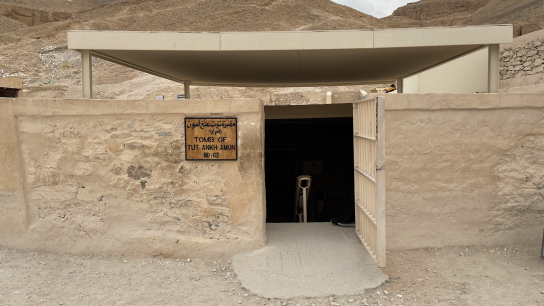
The Entrance to the Tomb of Tutankhamun
The doorway was eventually opened, revealing a long corridor leading to the tomb's first chamber, the Antechamber. Over the following months, Carter and his team carefully excavated the tomb, revealing its many treasures and artifacts.
The discovery of Tutankhamun's tomb and its contents caused a worldwide sensation, making headlines around the globe. It also sparked renewed interest in ancient Egypt and its culture, fueling a fascination that continues to this day.
Hundred years later, we are still fascinated by the young King and his burial objects.
In recent years, researchers have used modern technology, such as CT scans and DNA analysis, to study the mummy of Tutankhamun and his family members, shedding new light on their lives and the royal lineage of the time.
Additionally, it is believed that there may still be undiscovered chambers or passages within the tomb complex that have yet to be explored. In 2015, a team of researchers used ground-penetrating radar to scan the walls of the tomb, and found what appeared to be a hidden chamber. However, subsequent scans by other teams have failed to confirm the existence of any hidden rooms.
Even if there are no undiscovered chambers within the tomb, there is still much to learn from the thousands of artifacts that were found within it. Many of these items are still being studied and analyzed by researchers today, providing new insights into the culture and society of ancient Egypt.
The Curse of the Pharao
The so-called "Curse of the Pharaohs" is a legend surrounding the discovery of the Tomb of Tutankhamun. According to the legend, anyone who enters the tomb or disturbs the mummy of a pharaoh will be cursed with bad luck, illness, or even death.
The legend of the curse gained widespread attention in the media after a series of strange incidents occurred following the discovery of Tutankhamun's tomb in 1922. Lord Carnarvon, the wealthy British aristocrat who financed the excavation, died shortly after the tomb was opened, and several other members of the expedition also died under mysterious circumstances in the years that followed.
These incidents led some people to believe that the curse was real, and that it had been unleashed upon those who had disturbed the pharaoh's resting place. However, many experts have dismissed the idea of a curse as superstition and point out that many of the supposed "cursed" individuals, including Carter himself, lived for many years after the discovery of the tomb.
Furthermore, modern scientific analysis of the mummies and artifacts from the tomb has found no evidence of any harmful substances or curses. Instead, it is believed that the "Curse of the Pharaohs" is simply a myth that has been perpetuated over the years by popular culture and media attention.
